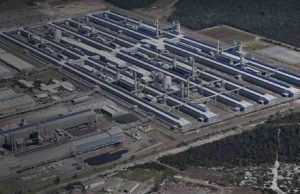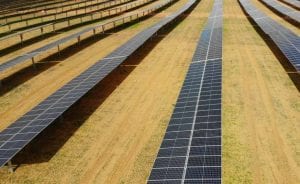The Australian electricity sector has recorded its biggest jump in emissions since 2001, as emissions from increased use of brown coal and black coal generators continues to grow since the repeal of the carbon price a year ago.
The latest update of Pitt & Sherry’s Cedex update for the month of July revealed that emissions from generators in the National Electricity Market (which covers all of Australia except W.A., the Northern Territory and some remote grids) grew 1.2 per cent over the previous two months.
Pitt & Sherry analyst Hugh Saddler says this is the biggest two month increase in NEM emissions since January 2001, when, by a remarkable coincidence, total emissions were at almost exactly the same level as they are now, although with lower demand.
Saddler’s analysis shows that the share of coal fired generation has jumped sharply over the past year to 76.3 per cent, with black coal accounting for 51.9 per cent of generation and brown coal 24.4 per cent
This comes amid claims from the Abbott government that its Direct Action program will deliver cuts in Australia’s emissions, although a new report noted that the top 20 power sector emitters will not be constrained in any way.
It also comes as the US introduces biting targets and emissions standards that will force the closure of many US coal plants – almost all of which are cleaner than Australia’s brown coal generators in Victoria.
This graph above shows the reverse in emissions fall since the repeal of the carbon price. The gradual fall in emissions had begun in earnest in 2009, with the introduction of what was then a bipartisan target of 41,000GWh of renewable energy by 2020. This target has since been slashed to 33,000GWh.
The demand falls represent the impact of energy efficiency measures and the huge growth in solar PV, which has allowed households to cut their demand by more than 10 per cent on average.
The largest increase in coal generation was in Queensland, ironically to help power the massive LNG plants which are exporting liquefied natural gas to Asian markets. That extra generation is adding nearly 2 million tonnes of CO2 a year, and will likely grow.
Gas generation in Queensland has slumped 36 per cent in July, largely as a result of increased gas prices caused by the surge towards export parity. Gas was also displaced in South Australia, where it was replaced by cheaper imports of brown coal from Victoria.
Wind generation in the year ending July 2015 was below the level reached in the year to May 2015, in terms of both total output and share of NEM electricity supply (5.4 per cent in July, 5.5 per cent in May).
However, as RenewEconomy reported last month, NEM wind generators recorded both their highest ever 30 minute trading period average output, 3,351 MW in the half hour to 8.00 pm on Saturday 25 July, and their highest daily output of 70.6 GWh on the same day.
This was equal to 14.4% of total NEM sent out generation on that day. The total of wind plus hydro was 19.3% of sent out generation.








